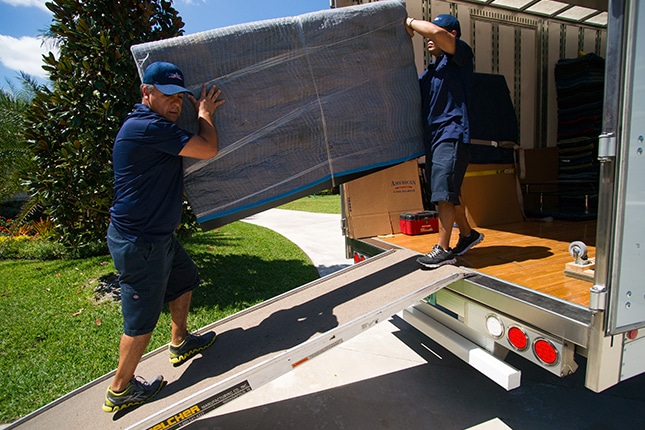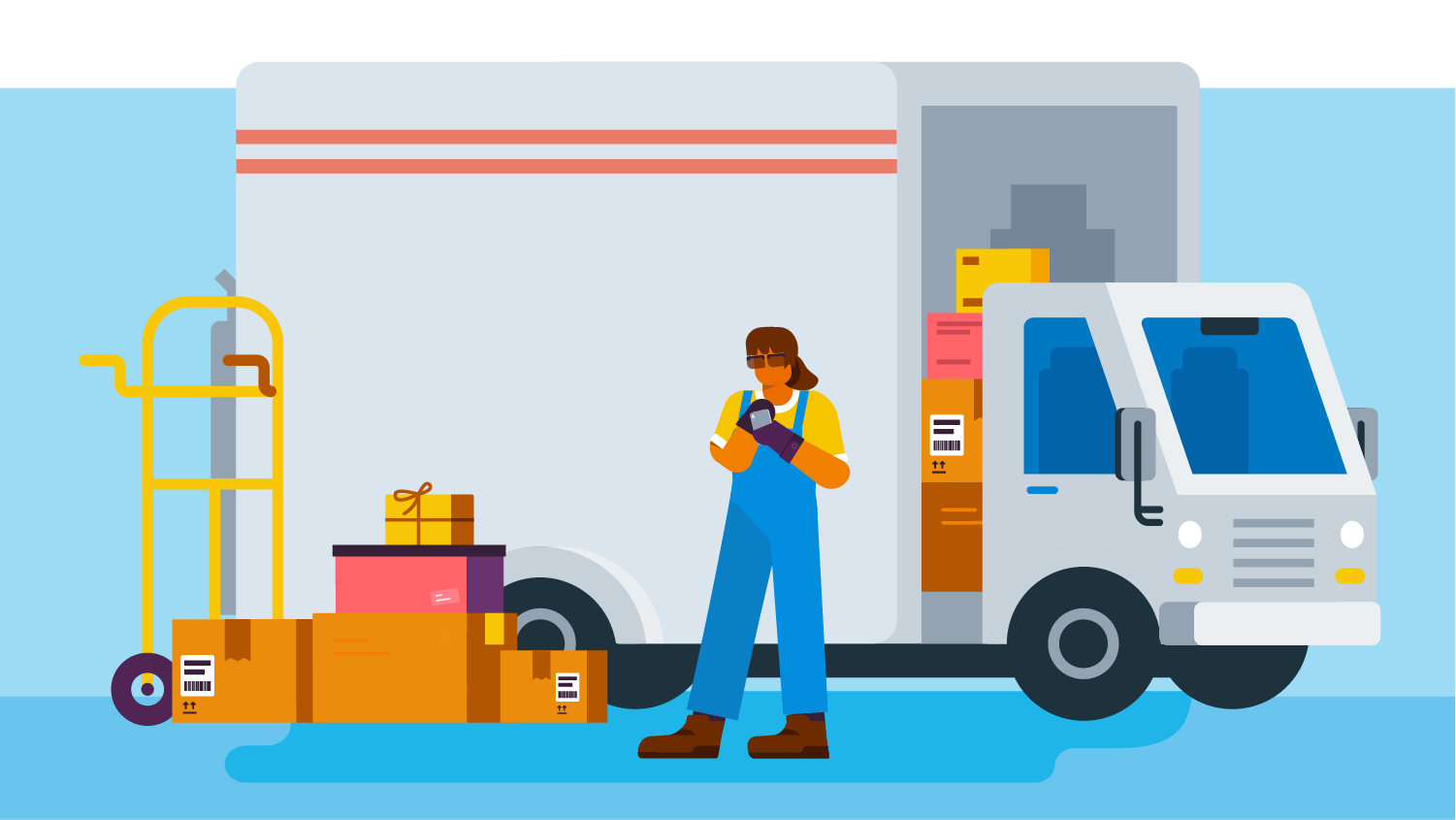International Movers: In what way Relocation Experts Help Long-Distance Relocation Easier
Movers With Great Reviews: Specialist Relocation Experts Can Help Make Your Transition Smooth And Stress-Free
History and Development of Moving Services
The Dawn of Moving: From Muscle to Devices
Photo this: a handful of strong males hauling heavy trunks on wood carts, browsing cobblestone streets with sweat and decision. Before the modern-day moving market took shape, moving was a brutal, labor-intensive job. In ancient times, relocation often implied counting on large physical strength and rudimentary tools. The absence of specialized services indicated families and merchants had to coordinate every detail themselves, often running the risk of damage or loss.
However isn't it interesting how necessity fuels development? As cities expanded and commerce grew, the requirement for efficient, reliable moving options ended up being glaringly obvious. Go into the era of horse-drawn wagons and later on, motorized cars, which transformed how belongings traveled from one location to another.
Industrial Revolution: The Driver for Modification
The 19th century's commercial boom improved lots of aspects of life, including how people moved. Suddenly, metropolitan migration surged, and with it, the demand for professional movers increased. No longer was moving a simple chore; it developed into a specific service offering:
- Packing expertise to secure fragile products
- Organized loading techniques taking full advantage of space
- Transport services customized to various distances
This period marked the birth of companies committed exclusively to moving, preparing for today's complex logistics and customer-centric methods.
Technological Advancements and Their Effect
Can you picture moving without modern devices? The development of hydraulic lifts, forklifts, and pallet jacks transformed the industry over night. All of a sudden, movers could deal with bulky furniture and heavy home appliances with ease, minimizing injuries and enhancing effectiveness.
Moreover, the combination of digital innovation stimulated a new age of development. GPS tracking, online booking platforms, and real-time inventory management have actually become staples in the moving services landscape. These tools not just boost openness however likewise empower customers to remain linked and informed throughout their moving journey.
Key Turning Points in Moving Solutions Development
| Era | Advancement | Significance |
|---|---|---|
| Ancient Times | Manual labor and standard carts | Foundation of moving as a need |
| 19th Century | Horse-drawn wagons and packing services | Birth of professional moving companies |
| 20th Century | Motorized trucks and mechanized equipment | Increased efficiency and scale |
| 21st Century | Digital integration and GPS technology | Improved consumer experience and logistics |
Reflections on the Journey
Assessing the advancement of movers, one might wonder: how did a basic act of carrying possessions end up being an advanced market? It's a tale of durability, adaptation, and continuous improvement. From the sweat-soaked streets of old to the precision-driven operations of today, the history of moving services is as dynamic as the people who depend on them.
Next time you load a box or hire a mover, think about the layers of history embedded in every action. The journey of movers encapsulates human ingenuity, transforming what was as soon as a difficult task into a seamless experience.
Exploring the Spectrum of Moving Providers
When the time comes to shift your life from one address to another, the variety of moving services available can feel like navigating a labyrinth. Do you need a basic loading and dumping team, or does your relocation demand the finesse of full packing and unpacking? Understanding the nuances can conserve hours of disappointment and unexpected expenses.
Common Types of Moving Providers
- Local Moves: Developed for movings within a city or city, these services generally run on a per hour basis, perfect for brief ranges.
- Long-Distance Moves: Covering moves beyond 100 miles, these need more coordination, from logistical planning to protect transport, typically priced by weight and distance.
- Full-Service Relocations: Movers deal with whatever-- packing, packing, transporting, dumping, and often even unloading. Suitable for those pushed for time or energy.
- Self-Service Moves: You load and fill your belongings, while the business handles transport and unloading. A middle ground offering cost savings and some convenience.
- Specialized Moves: For delicate, bulky, or valuable items like pianos, antiques, or art work, requiring specific equipment and competence.
Expert Tips to Navigate Your Moving Service Choices
- Prioritize Flexibility: Pick a service that adjusts to unexpected hold-ups or last-minute modifications-- rigid schedules can turn a smooth relocation into a logistical nightmare.
- Inspect Insurance Options: Not all moving business offer the same level of defense. Comprehending your coverage can avoid heartache if something goes awry.
- Request In-depth Inventories: An accurate product list avoids disputes and makes sure responsibility, particularly when handling long-distance or specialty moves.
- Consider Time of Year: Seasonal need can impact accessibility and rates. Early booking during off-peak seasons may approve better service and versatility.
- Ask About Packaging Materials: High-quality boxes, bubble wrap, and cushioning can be the difference in between a scratched heirloom and a pristine arrival.
Table: Service Features Compared
| Service Type | Who Packs? | Transport Mode | Typical Pricing Model | Suitable For |
|---|---|---|---|---|
| Local Move | Customer or Movers | Truck | Hourly | Brief distances, small loads |
| Long-Distance Move | Movers | Truck or Container | Weight & & Range | Cross-state or regional relocation |
| Full-Service Move | Movers | Truck | Flat or Weight-Based | Time-sensitive, high-stress relocations |
| Self-Service Move | Consumer | Truck or Container | Flat or Hourly | Cost-conscious, hands-on movers |
| Specialty Move | Movers with proficiency | Specialized Devices | Custom-made Quote | Vulnerable or valuable products |
The Unseen Complexity Behind Each Choice
Have you ever wondered why moving appears simple and easy on tv however turns into a cascade of last-minute decisions in real life? The truth lies in the intricacies of each service type. For instance, full-service moves might look like a luxury, but the proficiency involved in packaging delicate treasures or disassembling large furniture is a craft developed over years. Choosing for a self-service move might conserve cash, however it demands a keen understanding of how to load efficiently-- did you know that stacking strangely shaped boxes improperly can trigger internal shifting during transit, wrecking fragile contents?
Selecting the ideal kind of moving service is not just about benefit-- it has to do with securing your memories and investments. What's your move's story going to be?

Packaging and Moving Methods
Ever attempted to fit a suitcase that simply will not close? That's the sort of puzzle professional movers solve daily-- however on a much larger scale. The secret lies not in brute force however in strategic placement and intelligent usage of space. Packing isn't simply about stuffing items into boxes; it's an art kind where every inch counts.
Layering for Success
Think of a painter layering colors to produce depth. When packaging, begin with heavier products at the bottom, then cushion with softer materials like bubble wrap or towels. This avoids damage and optimizes box stability. Strangely formed items can slip into spaces, reducing lost space.
- Wrap vulnerable products separately with tissue or foam to prevent scratches.
- Use clothing as cushioning-- it's both effective and environmentally friendly.
- Fill empty spaces with packaging peanuts or crumpled paper to decrease movement.
Labeling: The Unsung Hero

What great is best packing if you spend hours rummaging through boxes? In-depth labeling is a game-changer. Rather of unclear tags like "Cooking area," try this approach:
| Label | Description | Top priority |
|---|---|---|
| Vulnerable - Glassware | Handle with care, consists of fragile items | High |
| Basics - Very First Night | Products required instantly after moving | Urgent |
| Books - Study Room | Stacked, heavy books | Medium |
Strategic Packaging Tips
- Dismantle big furnishings and keep screws in identified bags taped to the pieces.
- Use uniform box sizes when possible-- stacking ends up being easier and safer.
- Don't overpack boxes; weight limitations exist for a reason. Aim for 40-50 pounds max.
- Wrap furniture edges with moving blankets to prevent scratches during transit.
- Seal boxes with high-quality packing tape-- double layers on the bottom are vital.
Why do some movers swear by a color-coded system? Since it gets rid of guesswork on moving day. Designate each space a color and mark boxes appropriately. This small step can save hours when unloading and unloading.
Packaging and moving need precision-- like a chess game where every relocation counts. Have you ever noticed how some movers deal with bulky products easily? They leverage website angles and pivot indicate browse tight corners without damage. It's not muscle; it's method.
Unseen Struggles Behind the Moving Van Doors
Ever watched a group of expert movers bring a grand piano through a narrow entrance and wondered how they pull it off without a scratch? The art of moving isn't just muscle and trucks; it's a delicate dance with unpredictability. Weather condition can flip from a sunlit true blessing to a torrential threat in minutes, turning an uncomplicated drive into a logistical labyrinth.
One well-known hurdle is the labyrinthine layout of some homes or homes. Staircases too tight for dollies, doorways narrower than basic boxes, or elevators that barely fit a sofa-- these physical peculiarities demand inventive options on the area. Movers typically turn to non-traditional techniques like disassembling furnishings or utilizing custom-made padding to secure both the product and the property.
Accuracy Packaging: More Than Simply Covering
It's appealing to believe packaging is simply packing boxes, but the reality is a complex puzzle of weight distribution and fragility. Movers should prepare for how products will move throughout transit-- a mistake can suggest shattered treasures or dented appliances. The ace in the hole? Strategic layering and using products with specific shock-absorbing qualities.
- Bubble wrap is basic, however rotating it with foam sheets can drastically decrease impact damage.
- Heavy items address the bottom; fragile ones nestle on top, cushioned by soft textiles.
- Identifying boxes not simply by contents but by dealing with guidelines makes sure quicker, much safer unloading.
Another less spoke about stress is the psychological toll. The clock ticks non-stop, and every hold-up ripples through tight schedules. Staying calm in the middle of chaotic last-minute modifications requires imagination and group synergy.
Traffic Jams and Timing: The Unnoticeable Opponents
| Barrier | Expert Strategy | Impact |
|---|---|---|
| Urban congestion | Route optimization apps and flexible scheduling | Lessens hold-ups and fuel intake |
| Parking limitations | Pre-arranged authorizations or strategic parking close by | Avoids fines and time loss |
| Unforeseeable weather condition | Water resistant coverings and contingency strategies | Maintains the condition of items and equipment |
Do you really understand what it requires to keep a moving day on track? It's not practically strength or stamina; it's about insight, versatility, and a deep understanding of every piece of the puzzle. The next time you see movers at work, remember: behind that seamless operation lies a series of computed maneuvers and fast thinking that couple of ever notice.